Dye migration in screen printing can be a frustrating problem, especially when printing on synthetic fabrics like polyester. It occurs when the fabric’s dye starts to bleed into the printed ink, causing the colors in your design to shift or fade. This effect often shows up after the curing process, as the heat activates the fabric dye, leading to unwanted color blending.
But don’t worry – there are effective ways to tackle this! Using low-bleed inks, applying a dye-blocking layer, and adjusting curing temperatures are just a few methods to help you keep your prints crisp and true to color. With these techniques, you can prevent it and ensure your designs stay as vibrant as intended.
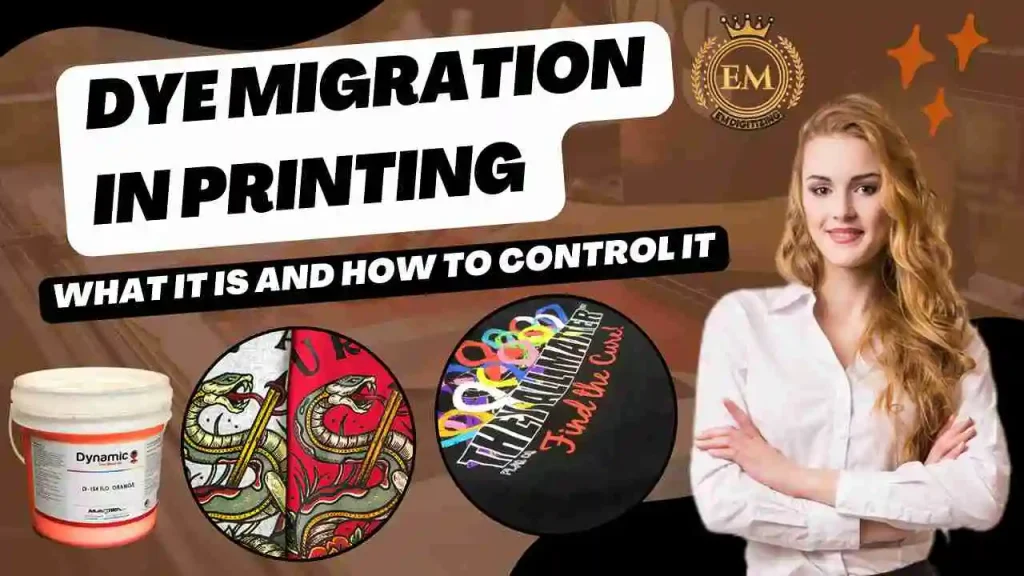
Dye Migration in Printing: What It Is and How to Control It?
What is Dye Migration in Printing?
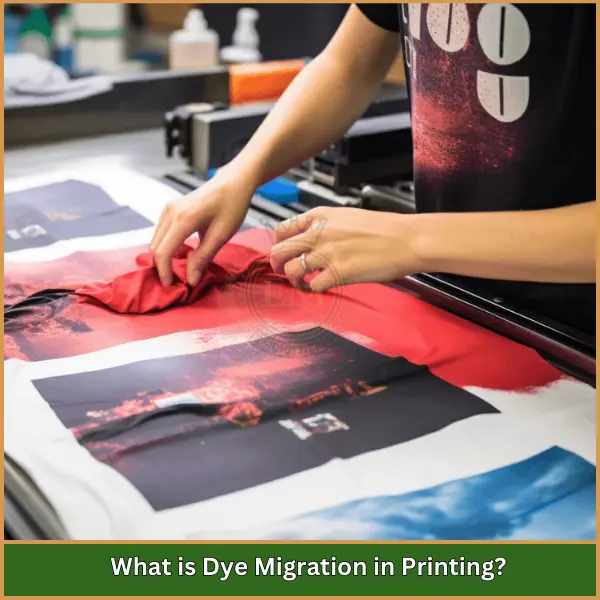
It refers to the process where dye from the fabric or garment material transfers or “bleeds” into the ink layer of a printed design. This issue often occurs in synthetic fabrics, especially polyester, when exposed to heat during the curing process. The dye molecules become mobile and can move into the ink, causing a discoloration or tint, which alters the intended colors of the print and reduces overall print quality.
What are the Factors that Cause Dye Migration?
It happens due to several factors that influence how colors move in fabric. Understanding these can help prevent unwanted color changes in your prints.
- Fabric Types Susceptible
- Heat and Curing Temperature
- Dye Quality and Stability
- Ink Type and Composition
- Humidity Levels During Printing
- Time and Pressure Applied
1. Fabric Types Susceptible
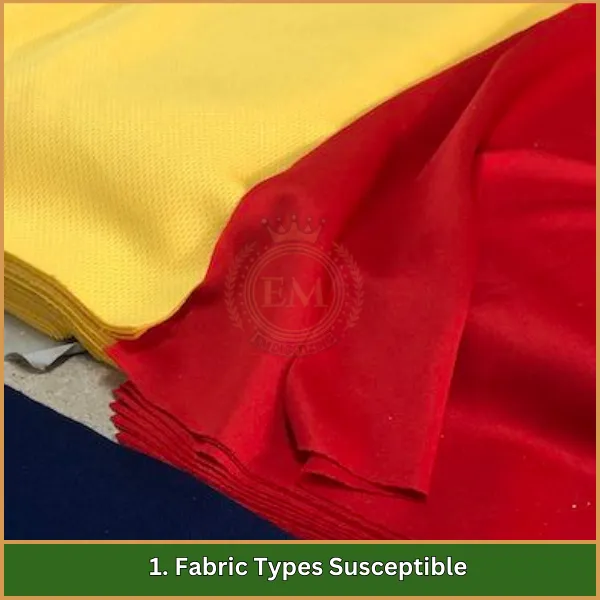
Certain fabrics are more prone to migration in printing than others. Synthetic materials, such as polyester and nylon, are particularly susceptible because they often contain heat-sensitive dyes. When heat is applied during the printing process, these dyes can bleed into the ink layer, causing discoloration. Blended fabrics with a high percentage of synthetic fibers may also experience this issues.
2. Heat and Curing Temperature

The amount of heat used in the curing process is a significant factor in color migration. When the temperature is too high, it activates the dye in synthetic fabrics, allowing it to migrate into the ink. To minimize it, it’s recommended to use lower curing temperatures where possible, or specialized low-cure inks that reduce the need for high heat.
3. Dye Quality and Stability
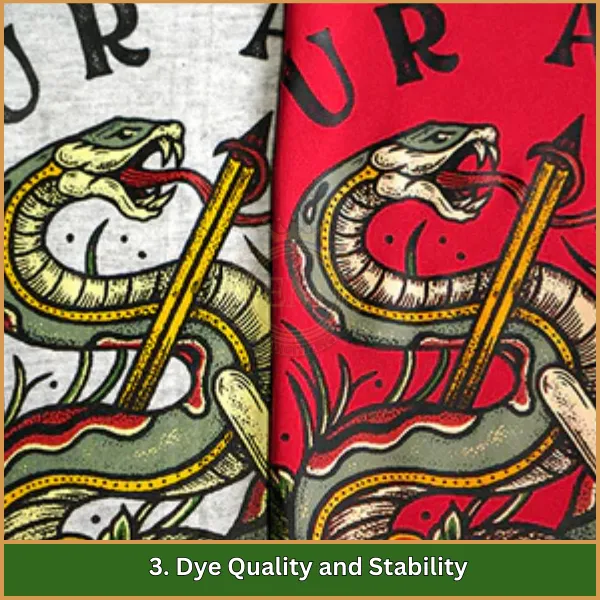
The stability of the dye used in the fabric plays a major role in this issue. Low-quality or unstable dyes are more likely to bleed when exposed to heat and pressure. Fabrics dyed with high-quality, stable dyes are less prone to migration, ensuring the printed colors stay true.
4. Ink Type and Composition
The type of ink used can also affect color migration. Certain inks are formulated to block or resist migration, making them suitable for printing on synthetic fabrics. Examples include:
- Low Bleed Plastisol Inks: These inks are specifically designed to reduce migration by forming a barrier layer between the fabric and the ink.
- Polyester-Friendly Inks: These inks are made to cure at lower temperatures, reducing the risk of migration on polyester and synthetic blends.
- Dye-Blocking Underbase Inks: These inks act as a primer layer, preventing dye from seeping into the top layers of ink.
5. Humidity Levels During Printing
Humidity in the printing environment can contribute to color migration. High humidity can increase the moisture content in fabric fibers, making them more susceptible to heat-related print migration during curing. It’s essential to control the humidity in the printing area to prevent excessive dye movement.
6. Time and Pressure Applied
The amount of time and pressure applied during the printing and curing process also impacts dye migration screen printing. Excessive pressure or prolonged heat exposure can cause the dye to transfer more readily into the ink. Using just enough pressure and reducing exposure time during curing can help prevent migration, especially on sensitive fabrics.
How to Prevent Dye Migration in Screen Printing?
It is essential to maintain the quality of printed designs on synthetic fabrics. Below are effective methods to help control and how to fix dye migration issues in screen printing.
- Use Low Bleed Inks
- Lower Curing Temperature
- Apply Dye-Blocking Underbase
- Choose Dye-Stable Fabrics
- Control Humidity Levels
- Use Proper Pressure and Time Settings
- Test Prints
1. Use Low Bleed Inks
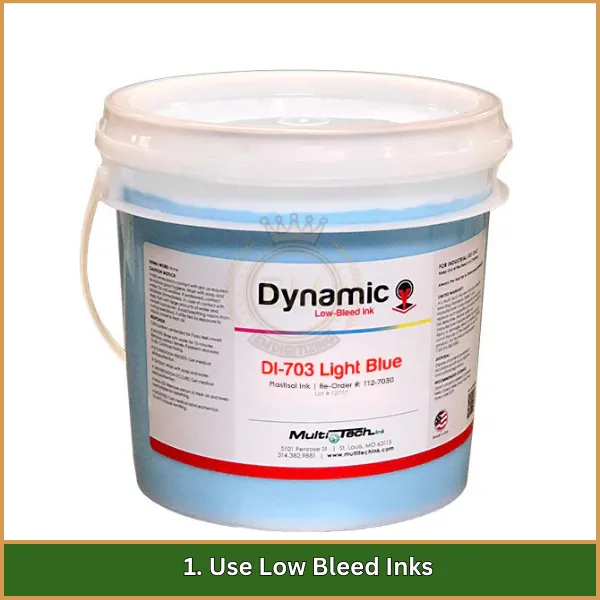
They are specially formulated to resist color migration by creating a barrier between the fabric dye and the printed ink. These inks act as a dye migration blocker, ideal for printing on synthetic fabrics, like polyester, where migration is more likely. Using low-bleed inks helps maintain the print’s true colors and prevents unwanted tinting.
2. Lower Curing Temperature

High curing temperatures can trigger migration in synthetic fabrics. Lowering the curing temperature reduces the chance of dye moving into the ink layer. Many low-cure inks are designed to cure effectively at lower temperatures, making them a great option for reducing migration in screen printing.
3. Apply Dye-Blocking Underbase
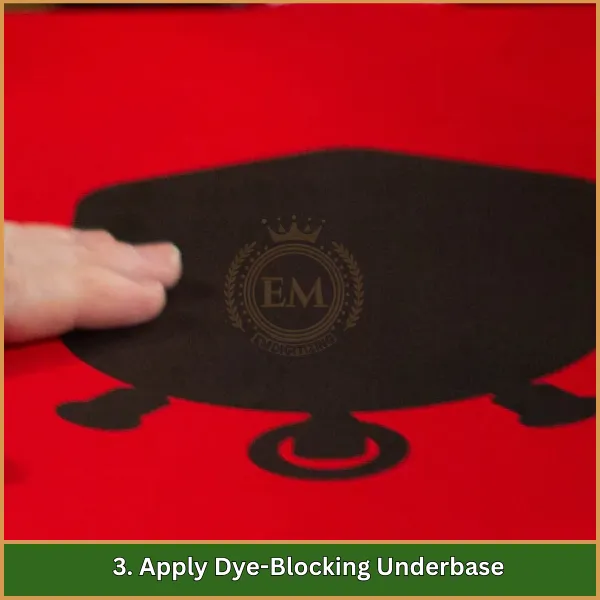
A dye-blocking underbase acts as a primer layer that prevents dye from seeping into the printed ink. This underbase, typically white or clear, is applied before the main ink layer to create a protective barrier. It’s especially useful for preventing migration in dark or brightly colored synthetic fabrics.
4. Choose Dye-Stable Fabrics
Some fabrics are dyed with stable, high-quality dyes that are less prone to migration. Opting for dye-stable fabrics can help reduce the risk of migration and keep the printed design intact. Check fabric specifications or consult suppliers to ensure the materials used are suitable for screen printing.
5. Control Humidity Levels
High humidity in the printing environment can increase the likelihood of migration. Excess moisture makes the fabric fibers more sensitive to heat, which can cause the dye to bleed. Maintaining optimal humidity levels in the workspace helps control dye movement and produces more consistent print results.
6. Use Proper Pressure and Time Settings
Excessive pressure or prolonged exposure to heat during curing can promote color migration. By using the right amount of pressure and reducing curing time where possible, you can minimize dye transfer into the ink. Adjusting these settings based on fabric type can help prevent migration and improve the quality of the final print.
7. Test Prints
Before proceeding with large print runs, test a small sample to check for any signs of migration. This step allows you to make necessary adjustments, such as modifying curing time or switching to a low bleed ink, to ensure that the final prints are vibrant and free from migration.
Tips to Prevent Dye Migration in Your Prints
Avoiding color migration is essential for producing crisp, clean prints without unexpected color shifts. Here are some easy steps to help keep your designs looking sharp:
- Opt for fabrics that are dyed with stable, high-quality colors, as these are less likely to bleed.
- Choose low-bleed inks specifically formulated to resist dye color migration.
- Use a dye-blocking primer layer on fabrics prone to migration for added protection.
- Set lower curing temperatures to reduce the risk of heat-triggered dye bleeding.
- Keep humidity levels in check to prevent moisture from affecting dye movement.
- Apply the right amount of pressure and avoid over-curing to limit migration.
- Always test a sample print to ensure your final results will remain true to color.
Wrapping Up
To wrap up, keeping dye migration in check is essential for vibrant, long-lasting prints. With the right techniques—such as choosing low-bleed inks, adjusting curing temperatures, and applying dye-blocking layers—you can confidently avoid unwanted color shifts in your designs.
For those seeking top-notch vector art services, EMDigitizing is here to help! We offer high-quality vector art with fast turnaround times and affordable rates. Plus, we guarantee quality and provide a preview option, so you’re always sure about your final design. If you’re a first-time customer, take advantage of a 50% discount on your first order! Ready to bring your designs to life? Get started with EMDigitizing today!
